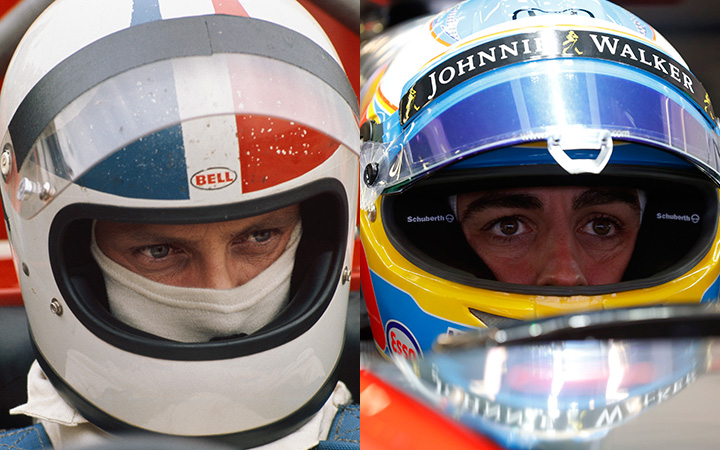So he did. In the unloved March 701, Amon was second at Spa and Clermont-Ferrand, but victory eluded him – as indeed it was always to do – and by half-season Ferrari was coming on strong, Ickx and Regazzoni finishing 1-2 at the new Ӧsterreichring, after which Clay won at Monza, and Jacky at St-Jovite and Mexico City. Amon – who to this day awaits three-quarters of his retainer from March – moved on to Matra, which meant a return to getting paid, but also to being again stuck with gutless V12s.
As Stirling Moss has pointed out, Fangio, in addition to all his other strengths, had a gift for being with the right team at the right time. After winning his first World Championship in 1951, with Alfa Romeo, Juan Manuel had two relatively fallow seasons with Maserati, but then won four further titles on the trot – and with three different teams: Mercedes, Ferrari and, more successfully this time, Maserati. That done, at 46, he called it a day.
Amon was rather less adept at making choices. If it has always been said, not without some justification, that much of his legendarily bad luck was of his own making, a part of that came from leaving teams at just the wrong time. When he signed for Ferrari at the end of 1966, for example, his friend Bruce McLaren was extremely disappointed, for Chris had driven his Can-Am cars, and was integral to his F1 plans, which came to full fruition in 1968, Bruce himself winning at Spa, and Denny Hulme at Monza and St Jovite – where Amon’s clutchless Ferrari was leading by a minute when its gearbox broke…
After leaving Ferrari in some frustration, Chris was to regret it for the rest of his racing career. Late in 1973 he was invited back to Maranello, but – having given his word to John Dalton, the backer for his ill-fated Amon F1 project – felt he could not accept.
Now, in 2015, folk are murmuring that perhaps Fernando Alonso, whose supremacy as a pure racing driver is unquestioned by most, also has an unhappy knack for leaving teams at just the wrong moment. He won the world championship with Renault in 2005, but although he did the same again in ’06 already he was committed to leaving the team, having long previously signed with McLaren for ’07.
As history relates, the relationship between Alonso and Ron Dennis proved catastrophic, and although Fernando – like team-mate Lewis Hamilton – won several races, and was only a couple of points shy of the title, to continue the association was out of the question for both parties. Back went Alonso to Renault for a couple of seasons, until he could take up an offer from Maranello.
On paper, Fernando was put on earth to go there, and he did it with supreme optimism – as new Ferrari drivers always do. As Gilles Villeneuve put it, “When you’re first there, and you see all the facilities and everything, you wonder how they can ever lose a race. Then, as time goes by, and you become more aware of the politics, you understand…”







